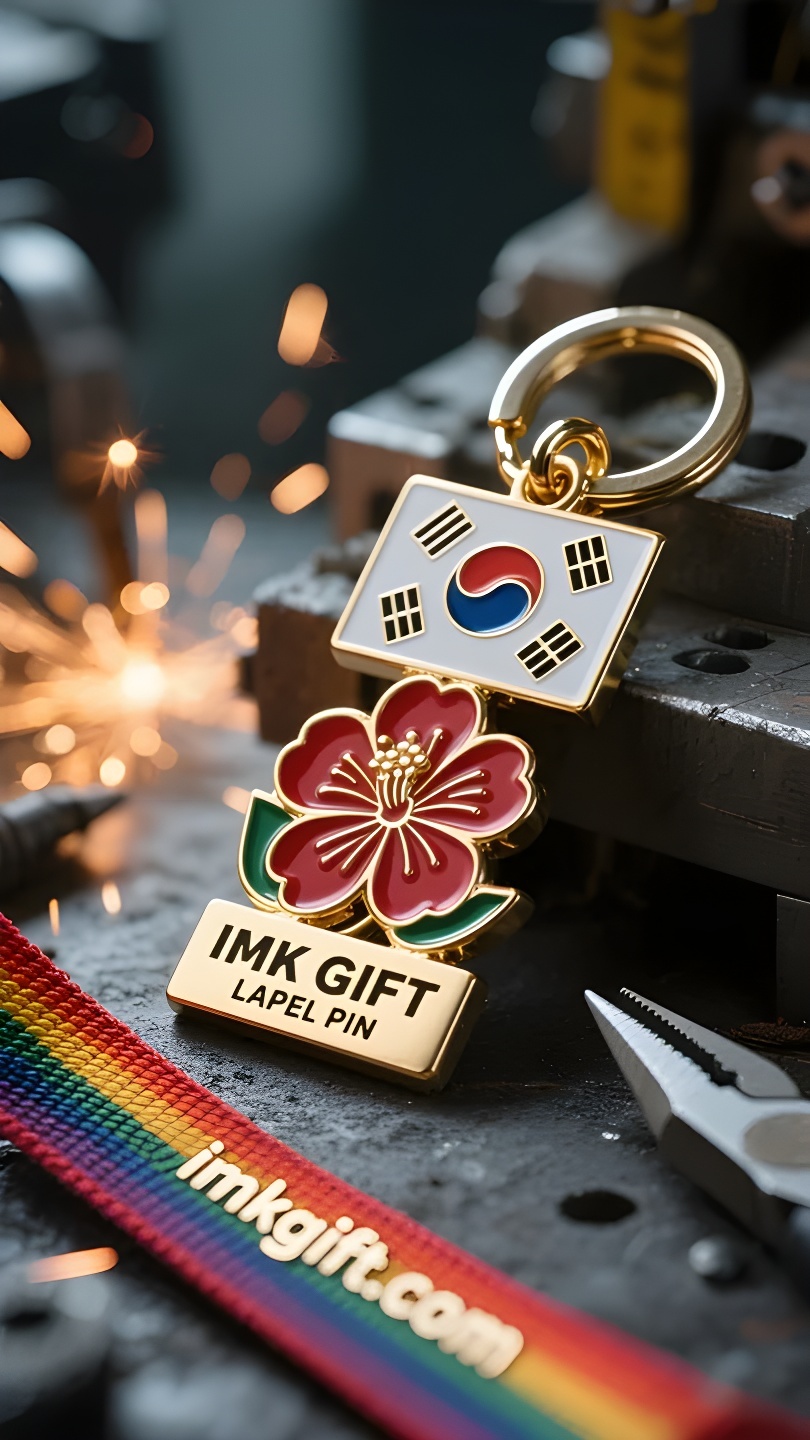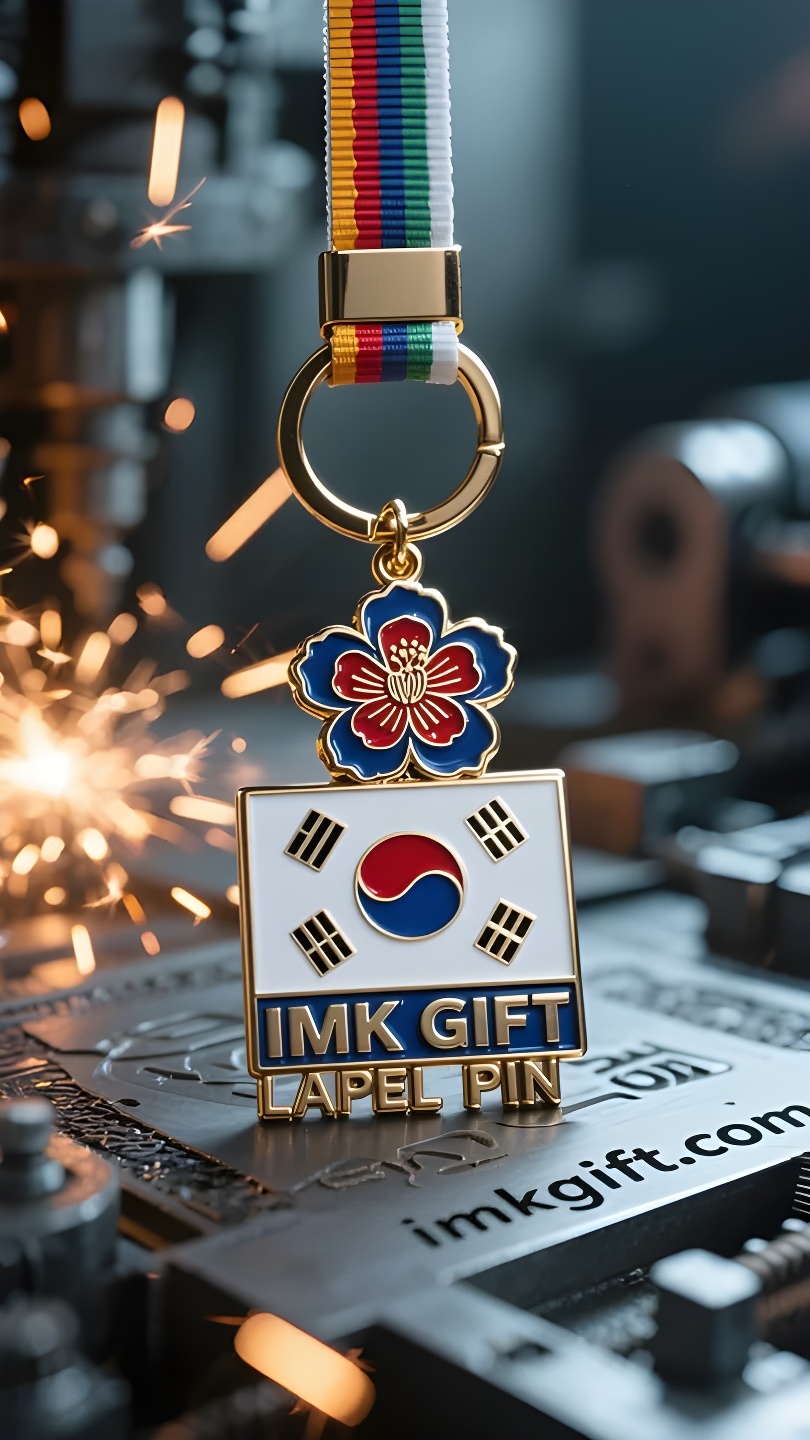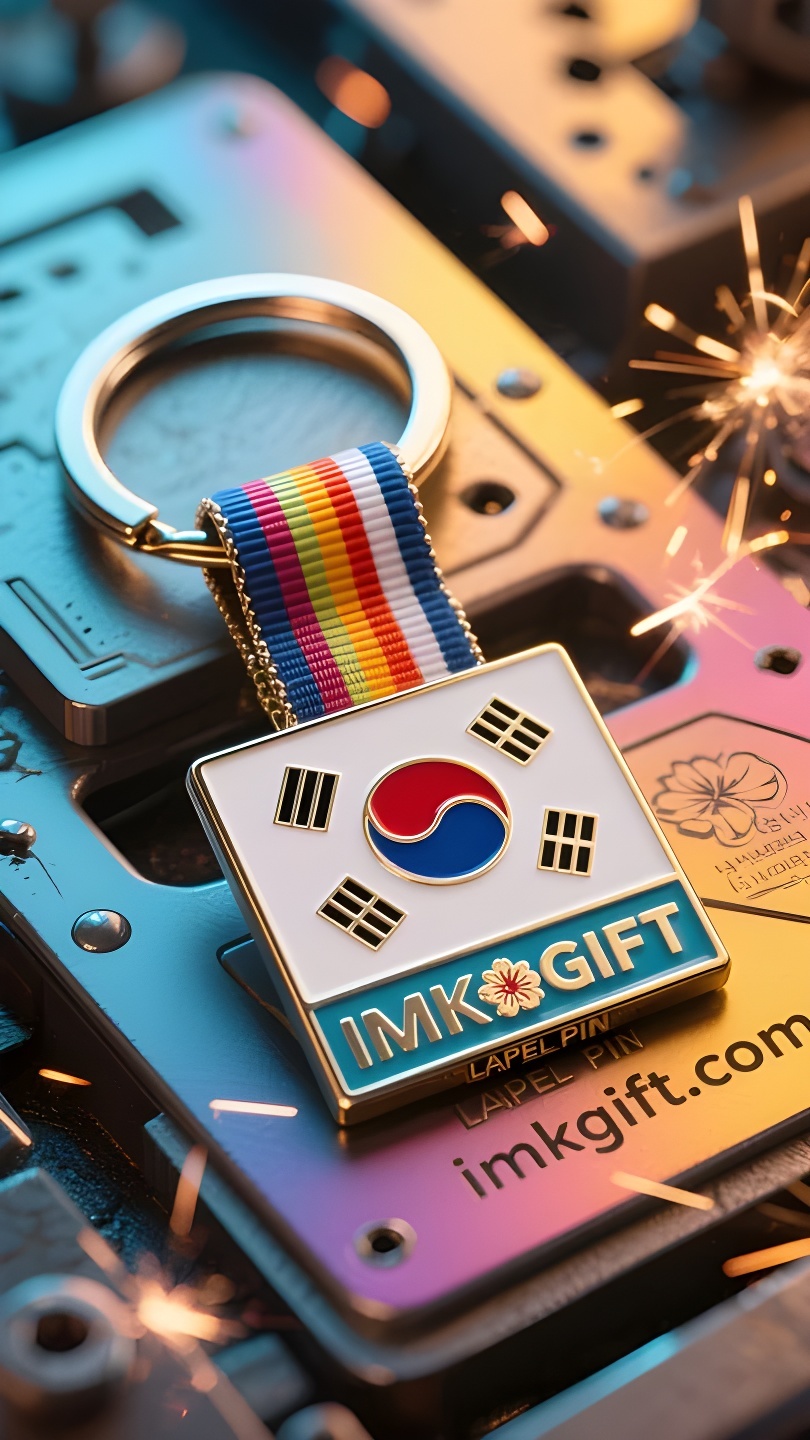in988-무궁화꽃이-피는-곳-산과-강과-해와-달이-새로워집니다
▼
8월의 서울 거리에서는 상점 창문에 국기와 목화로 장식된 모습을 항상 볼 수 있습니다. 해방 기념일이 다가오면서, 목화꽃이 반지 모양으로 조각된 태극권 열쇠고리가 사람들의 손끝을 스쳐 지나가며 독특한 민족 정신을 느끼게 됩니다. 대한민국 국기에 그려진 태극권 도형은 음과 양의 융합을 철학적으로 상징할 뿐만 아니라, “산, 강, 해, 달”이라는 영원한 이미지를 내포하고 있습니다. 국화인 목화는 아침에 피고 저녁에 시들지만, 매일 꽃을 피우기 때문에 ‘무한의 꽃’이라고 불립니다. 끊임없이 재생되는 이 활력은 마치 열쇠고리에 새겨진 꽃잎 층과 같습니다. 손끝으로 히비스커스 무늬를 쓰다듬으면, 마치 우리 조상들이 나라를 재건하는 데 보여준 불굴의 회복력을 만지는 듯한 느낌이 듭니다. 이 작은 휴대용 물품은 문을 여는 도구일 뿐만 아니라, 국가적 기억을 풀어주는 암호이기도 합니다. 장난구의 문화창의 워크숍에서 장인들은 버려진 소나무 조각을 이용해 열쇠고리를 만들고 있는데, 각각의 나이테는 시간의 흐름을 기록하고 있습니다. 마치 식민지 시대의 고통을 겪고 그 고통을 재생의 힘으로 전환한 한국과 마찬가지입니다. 젊은이들은 이런 열쇠고리를 배낭에 달아 매는데, 전통적인 상징을 지니고 다닐 뿐만 아니라 “죽은 나무도 봄이 되면 다시 살아난다”는 믿음을 이어받기도 합니다. 척박한 땅에서도 목화꽃은 새로운 활력으로 피어납니다. 아침 햇살이 히비스커스 꽃잎 사이로 비치고, 열쇠고리가 지하철 게이트를 부드럽게 미끄러지며, 딩동거리는 소리는 영원히 전진하는 국가의 발걸음을 메아리칩니다. 수백만 명의 사람들의 발자취를 따라 결코 사라지지 않는 붉은색과 파란색 태극권은 산과 강, 해와 달의 새로운 장을 계속해서 써 내려갑니다.
In August, you can always see decorations with national flags and hibiscus elements in shop windows on the streets of Seoul. As Liberation Day approaches, wooden carved Tai Chi keychains, with hibiscus flowers as the ring, are conveying a unique national spirit through people’s fingertips. The Tai Chi diagram in the Korean national flag is not only a philosophical symbol of the fusion of yin and yang, but also implies the eternal image of “mountains, rivers, sun and moon”. As the national flower, hibiscus flowers bloom every day, although they bloom in the morning and fall in the evening. They are called “infinite flowers”. This continuous regeneration of vitality is just like the layers of petals carved on the keychain. When your fingertips touch the hibiscus pattern, it seems to touch the indomitable tenacity of our ancestors when they restored the mountains and rivers. This small item that you carry with you is not only a tool to open the door, but also a code to open the national memory. In a cultural and creative workshop in Gangnam District, craftsmen make keychains with discarded pine wood scraps, and each annual ring records the precipitation of years. Just like South Korea, which has experienced colonial suffering, it transforms pain into the power of rebirth. Young people put such key chains on their backpacks, not only to wear traditional symbols, but also to inherit the belief that “dead trees will come back to life” – even in the poorest soil, hibiscus flowers should bloom with new vitality. When the morning sun penetrates the hibiscus petals, the key chain gently passes in front of the subway gate, and the ding-dong sound echoes the footsteps of a nation moving forward forever. This never-fading red and blue Tai Chi is following the steps of millions of people, continuing to write a new chapter of mountains, rivers, sun and moon.
八月的首尔街头,商铺橱窗里总能看到国旗与木槿花元素的装饰。随着光复节临近,一枚枚木质雕刻的太极纹钥匙扣,正以木槿花为环扣,在人们指尖流转出独特的民族精神。
韩国国旗中的太极图,既是阴阳交融的哲学符号,也暗含”山河日月”的永恒意象。而木槿花作为国花,虽朝开暮落却日日绽放,被称作”无穷花”,这种持续再生的生命力,恰如钥匙扣上雕刻的层层花瓣——当指尖抚过木槿纹路时,仿佛触摸到先辈们光复山河时百折不挠的韧性。这枚随身携带的小物件,既是开启家门的工具,更是开启民族记忆的密码。
在江南区某文创工坊里,匠人将废弃的松木边角料制成钥匙扣,每道年轮都记录着岁月沉淀。正如经历过殖民苦难的韩国,将伤痛转化为重生的力量。年轻人将这样的钥匙扣别在背包,不只是佩戴传统符号,更是承袭着”枯木逢春”的信念——即便在最贫瘠的土壤里,也要让木槿花绽放出新的生机。
当清晨的阳光穿透木槿花瓣,钥匙扣在地铁闸机前轻轻划过,叮咚声里回荡着一个民族永远向前的跫音。这抹永不褪色的红蓝太极,正随着千万人的步履,续写着山河日月的新篇章。
▼
Contact Us
📞 Tel: +0086-760-85286839
📧 Email: sales3@imkgift.com








